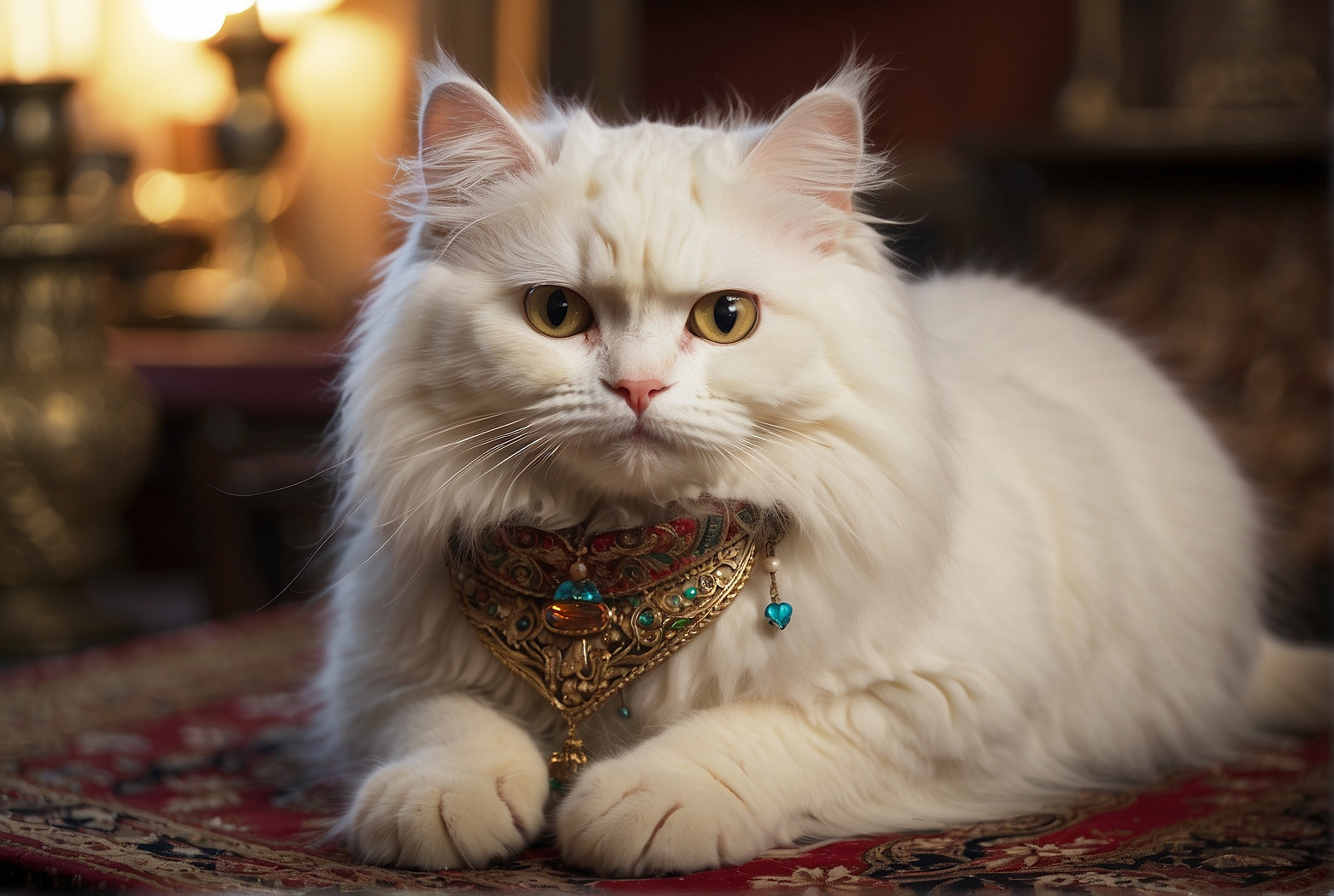Are you a Persian cat owner contemplating the idea of bringing another feline into your home? If so, you may be wondering whether adding a new furry friend to the mix is truly necessary. Well, rest assured that the answer lies within the unique nature of your Persian companion. Special in their own right, Persians possess their own set of needs and characteristics that may just make them the perfect candidate for welcoming another cat into their lives. Let’s explore the world of Persians and unravel the mystery of whether they truly need another feline companion.
Benefits of Having Multiple Cats
Companionship
Having multiple cats can provide an immense amount of companionship. Cats are known for their independent nature, but they still crave social interaction. When you have more than one cat, they can keep each other company and provide playfulness and entertainment. They can engage in mutual grooming, play together, and even sleep together, which can be incredibly heartwarming to witness. Their interactions can provide you with a sense of fulfillment as you observe their bond and know that they are not lonely when you are away.
Enhanced Socialization Skills
Having multiple cats can also help enhance your cats’ socialization skills. Cats are naturally territorial, but when they are exposed to other cats from a young age, they learn valuable socializing skills. They become more adept at reading and interpreting feline body language, which can help them navigate their interactions with other cats outside of their home. This socialization can benefit their overall well-being and prevent behavioral issues that may arise due to a lack of exposure to other cats.
Reduced Boredom and Stress
Cats, especially those of certain breeds like Persians, can become easily bored and stressed when left alone for long periods. By adding another cat to your household, you can provide them with a constant companion, thus reducing their boredom and stress levels. The presence of another cat can keep them entertained, engaged, and mentally stimulated. This can lead to a happier and healthier overall demeanor for your Persian cats.
Considerations Before Getting Another Cat
Time and Resources
Before deciding to get another cat, it is important to consider the time and resources required to provide proper care for multiple feline companions. Cats require regular feeding, grooming, and playtime, which means more time commitments for you. Additionally, having multiple cats means additional expenses for food, litter, veterinary care, and other supplies. So, make sure you have enough time and financial resources to meet the needs of multiple cats before making the decision.
Space and Environment
Another crucial consideration is the available space and environment in your home. Each cat needs their own territory and personal space to feel comfortable and secure. Assess whether your living space can accommodate multiple litter boxes, feeding areas, and resting spots for each cat. If your home is small or lacks the necessary divided spaces, it may not be ideal for bringing in another cat. Ensuring a harmonious living environment for all cats is essential for their well-being.

Compatibility with Existing Cat
Before introducing another cat to your Persian, it is crucial to consider their compatibility with your existing cat. Some cats are naturally more social and accepting of new additions, while others may be more territorial or prefer a solitary lifestyle. Take your Persian’s temperament, age, and previous socialization experience into account when selecting a new cat. It is also important to introduce the cats gradually and monitor their interactions closely to ensure a smooth transition and prevent conflicts.
Introducing a New Cat to a Persian
Gradual Introduction
To introduce a new cat to your Persian, it is important to take a gradual approach. Start by keeping them in separate rooms and gradually allow them to have supervised interactions through a cracked door or gate. This allows them to become familiar with each other’s scents without direct confrontation. Over time, gradually increase the amount of time they spend together, always under close supervision, until they become comfortable with each other’s presence.
Providing Separate Spaces
During the introduction period, ensure that each cat has their own separate space where they can retreat to if they feel overwhelmed or need some alone time. This could be a separate room or a designated area with food, water, and bedding. Providing separate spaces helps reduce stress and territorial conflicts, allowing each cat to have their own secure area until they feel more comfortable with each other.
Supervision and Mediation
While introducing a new cat to your Persian, it is crucial to closely supervise their interactions. Be prepared to intervene if any aggressive behavior or territorial disputes arise. Use positive reinforcement techniques, such as treats or praise, to reward calm and peaceful interactions. If necessary, seek advice from a professional animal behaviorist to help mediate any conflicts and ensure a harmonious relationship between your cats.
Potential Issues and Challenges
Territorial Behavior
One common challenge when introducing another cat to a Persian is dealing with territorial behavior. Persians, like many other cats, can be possessive of their living space and belongings. They may exhibit behaviors such as spraying, hissing, or aggression to defend their territory. It is important to be patient and provide each cat with their own territory and resources to minimize territorial conflicts. Time, gradual introduction, and positive reinforcement can help alleviate territorial behavior issues.
Aggression and Dominance
Aggression and dominance can also be potential issues when introducing a new cat to a Persian. Cats have their own hierarchies and pecking orders, and introducing a new member to the pack can disrupt this dynamic. It is crucial to closely observe their interactions and intervene if any aggressive behavior occurs. Using calming techniques, such as diffusing pheromone sprays or providing vertical spaces for each cat, can help reduce aggression and establish a more peaceful atmosphere.

Litter Box Availability
Adding another cat to your household means an increased demand for litter boxes. It is essential to provide enough litter boxes to avoid any litter box-related issues. The general rule of thumb is to have one litter box per cat, plus one extra. This ensures that each cat has sufficient access to a clean, private area to eliminate. Adequate availability of litter boxes can prevent territorial marking, stress-related litter box accidents, and reduce the likelihood of litter box-related conflicts between your cats.
Health and Hygiene Considerations
Regular Veterinary Care
Having multiple cats means you will have to manage the veterinary care needs of multiple feline companions. It is important to ensure that each cat receives regular vaccinations, wellness exams, and preventive care. This includes routine flea and tick control, dental care, and parasite prevention. Regular veterinary visits help ensure the overall health and well-being of all your cats and allow for early detection and treatment of any potential health issues.
Grooming Needs
Persians are known for their luscious and luxurious coats, which require regular grooming to prevent matting and maintain their appearance. When you have multiple Persians, grooming becomes even more essential. Make sure to establish a grooming routine for each cat individually, taking into consideration their coat type and grooming preferences. Regular brushing, bathing, and coat maintenance will help keep their coats healthy, reduce shedding, and promote a stronger bond between you and your cats.
Litter Box Maintenance
With multiple cats, litter box maintenance becomes a crucial part of hygiene management. Each cat should have access to a clean, well-maintained litter box. Scoop the litter boxes at least once a day and completely change the litter on a regular basis to prevent odors and maintain cleanliness. Regular litter box maintenance is essential not only for your cats’ physical health but also for their mental well-being.
Choosing the Right Cat
Consider Personality and Energy Level
When selecting another cat to join your Persian, it is important to consider their personality and energy level. Some cats are naturally more laid-back and prefer a relaxed lifestyle, while others are more active and need plenty of mental and physical stimulation. Choosing a cat with a compatible personality and energy level can help ensure compatibility and reduce the chances of conflicts or stress between the cats.
Choosing a Compatible Breed or Mix
In addition to considering personality and energy level, choosing a compatible breed or mix can also be beneficial. Some breeds, like Ragdolls or Maine Coons, are known to be sociable and get along well with other cats. However, it is important to remember that individual personality traits may vary, and it is always best to consider the needs and preferences of each individual cat rather than relying solely on breed characteristics.
Adopting from a Shelter or Rescue
Consider adopting your new cat from a shelter or rescue organization. There are numerous cats in need of loving homes, and adopting from a shelter not only saves a life but also allows you to provide a second chance for a cat in need. Shelters often have a variety of cats with different personalities and energy levels, giving you a better chance of finding a compatible companion for your Persian.
Preparing Your Home
Providing Individual Resources
Before bringing another cat into your home, ensure that you have enough resources to cater to each cat’s needs individually. This includes separate food and water bowls, litter boxes, scratching posts, and bedding. Each cat should have their own personal space and resources to prevent competition and territorial conflicts. Providing individual resources also helps establish a sense of ownership and reduces the likelihood of resource guarding behaviors.
Creating Safe Zones
Creating safe zones in your home is crucial to ensure each cat feels secure and has a place to retreat to when needed. These safe zones can be designated rooms or areas where only one cat has access at a time. Install baby gates or use cat-friendly barriers to create separate spaces for each cat, allowing them to have privacy and a sense of security when desired. Safe zones also help prevent any confrontations or territorial disputes that may arise.
Adding Enrichment
Enriching your home environment is essential when you have multiple cats. Provide plenty of vertical spaces, such as cat trees or shelves, for your cats to climb and explore. Offer a variety of toys, scratching posts, and interactive playtime to keep your cats mentally and physically stimulated. Environmental enrichment helps prevent boredom and promotes healthy activity levels, reducing the likelihood of behavioral issues and providing a more fulfilling environment for your cats.
Managing Multiple Cat Household
Feeding and Mealtime
Feeding multiple cats can be a logistical challenge, especially if they have different dietary requirements or eating behaviors. To manage mealtime effectively, consider feeding each cat in separate areas or using individual feeding stations. This ensures that each cat has their own space to eat comfortably and helps prevent food aggression or competition. If necessary, consult with a veterinarian or a feline nutritionist to develop a feeding plan that meets the dietary needs of each cat.
Play and Exercise
Play and exercise are essential for keeping your feline companions healthy and happy. Engage in interactive play sessions with each cat individually to provide mental stimulation and physical activity. Additionally, consider providing puzzle toys or food-dispensing toys to keep your cats entertained and engaged, even when you are not available to play directly with them. Regular play and exercise help reduce stress, prevent obesity, and strengthen the bond between you and your cats.
Providing Adequate Resting Spots
Cats love to nap and relax, and having multiple resting spots is essential in a multi-cat household. Ensure that there are enough beds, cozy blankets, and comfortable perches for each cat to rest or sleep on. Offering a variety of resting spots allows your cats to choose their preferred spots and prevents unnecessary competition or disputes over resting areas. Adequate resting spots also promote relaxation and overall well-being for your cats.
Benefits of Similar Breeds
Shared Grooming Habits
If you already have a Persian cat, considering adding another cat of a similar breed can have its advantages. Persian cats have specific grooming needs, and having cats with similar grooming habits can make the maintenance process more manageable. They may have similar coat textures, lengths, and grooming routines, making it easier for you to provide the necessary grooming care for both cats.
Similar Activity Levels
Choosing a cat of a similar breed or mix can also ensure that both cats have similar activity levels. Persians are generally known for being calm and less active compared to some other breeds. Bringing in a cat with a similar temperament and activity level can create a more harmonious environment in which both cats can coexist peacefully without any major conflicts arising from significant differences in play or energy levels.
Potential Bonding Opportunities
Similar breeds or mixes often have similar traits, including socialization tendencies and compatibility with other cats. Bringing in a cat that shares similar characteristics and traits with your Persian can increase the chances of them bonding well with each other. This bonding can lead to a deeper and more meaningful relationship between the cats, providing each cat with a lifelong companion and confidant.
When Another Cat may not be the Best Choice
Persian Adjusting to New Environment
While it can be beneficial to add another cat to your household, it is essential to consider your Persian’s individual needs and comfort level. Some Persians may be more sensitive to changes in their environment, and introducing another cat may cause undue stress or anxiety. Pay attention to your Persian’s behavior and wellbeing during the introduction process, and if you notice significant distress or negative changes in behavior, it may be best to reconsider the addition of another cat.
Financial Considerations
Adding another cat to your household also involves additional financial responsibilities. The cost of food, litter, veterinary care, and other supplies can add up quickly when you have multiple cats. Before making the decision, assess your financial capabilities and ensure that you can comfortably provide for the needs of all your cats, including unexpected veterinary expenses. It is crucial to prioritize the well-being and care of your cats without compromising your own financial stability.
Allergies or Asthma Concerns
If you or any members of your household have allergies or asthma, introducing another cat may not be the best choice. Persian cats, with their long coats, can trigger allergies or aggravate asthma symptoms in susceptible individuals. Adding another cat may increase the allergen load in your home, making it difficult to manage symptoms and maintain a healthy living environment. Consider consulting with an allergist or healthcare professional before deciding to bring another cat into your household if you have concerns about allergies or asthma.
In conclusion, having multiple cats can provide numerous benefits for both you and your feline companions. They can offer companionship, enhance socialization skills, and reduce boredom and stress. However, it is essential to consider various factors before adding another cat to your household, including time and resources, space and environment, and compatibility with your existing Persian. Introducing a new cat to your Persian requires gradual introduction, providing separate spaces, and close supervision. Potential issues and challenges such as territorial behavior, aggression, and litter box availability should be addressed and managed effectively. Health and hygiene considerations, choosing the right cat, preparing your home, and effectively managing a multiple cat household are crucial for the well-being of your cats. Similar breeds can have advantages such as shared grooming habits, similar activity levels, and potential bonding opportunities. However, there may be situations when adding another cat is not the best choice, such as when your Persian struggles with adjusting to new environments, financial considerations, or allergies or asthma concerns. By carefully considering these factors and taking the necessary steps to ensure a harmonious living environment, you can create a loving and fulfilling multi-cat household for your Persian and their new feline companion.
